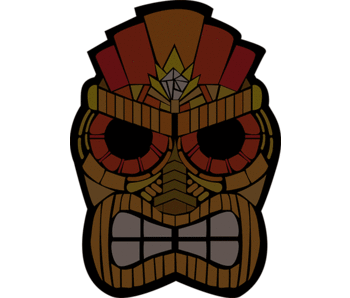What are Tiki masks?
Tiki masks are often seen as a fancy way to add a tropical flair to a home décor, but these carved wooden masks actually have a long, rich history in Polynesian culture. Tiki masks serve many purposes, from home and temple border protection to ancestor worship.
A Brief history behind Tiki masks
We will briefly explore the history behind Tiki masks so that you have a better understanding of the rich cultural traditions that stand behind one of your favorite home or outdoor decorations!
A Tiki mask is a hand-carved wooden mask that, originally was used to stand in as front porge guard. It's goal was to protect users from evil spirits. For some users it also served the purpose of increasing the mask wearers’ luck and ferility. These hand-carved pieces of art were used in both in private homes and in everyday life.
Tiki masks were usually carved to visualize the character of a particular god. Artist shape their facial expressions to resemble a specific trait. Tiki masks with the purpose to strengthen its wearer were designed as a tall, strong man. Maskes carved with the look of a fertile woman were worn if the user had fertility as a top priority.
What you might not know is that not all tiki masks represent gods in Polynesian or Hawaiian cultures. Also, some masks represented a piece of traditional folk and cultural art.
Tiki masks In Fijian culture
Tiki art had it's origin in Polynesia but spreaded through Oceania to the Melanesian part of Oceania. The wood craft art was practiced by men in Fiji. Carvins served practical use and shapes were often simple.
Weapons were richly decorated while tribal wars were widely spread in Fiji. Also special items for home use and ceremonies had beautiful carving. Today's carving is often used for tourism and plays no big role in Fijian society. There is one exception though: the traditional Fijian Kava drink, should only be scooped from a so called Tanoa, which is a traditional wood crafted bowl.





